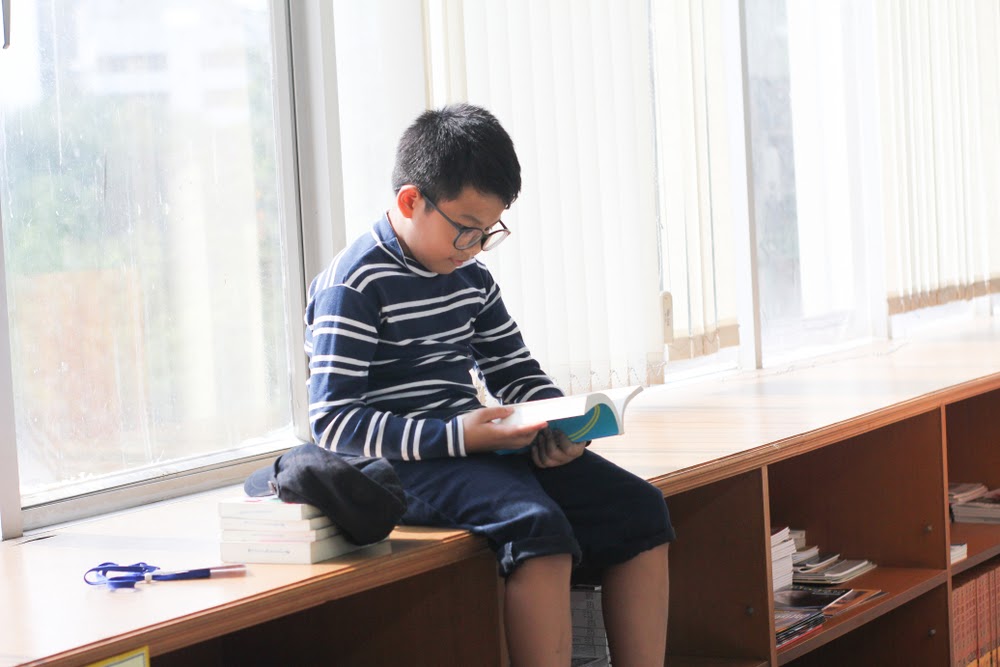
Every grade-level brings new challenges and fun adventures. At the age of seven, children may be in first or second grade. For many, reading is a developing skill. Seven-year-olds may work on sound blends and other decoding skills as they work to understand bigger words and expand their vocabulary.
Sight word lists may still be a common assignment in both first and second grade, and children may need to work on memorizing these lists of words. Parents Googling “how to help my 7-year-old read” can use a few tips and fun activities to help at home.
Even when children aren’t struggling with reading, they still need to read each day and practice their skills.
Sight Word Help
Sight words are a common expectation for children in the lower elementary grades. These are words children need to recognize immediately when they see them in stories and text. Sight words are typically easy, but memorization is a great way to help children learn them and recognize them.
The list of sight words change for each grade level, and a seven-year-old might be in either first or second grade. No matter what words are on their list, though, use these games and exercises to help them learn and recognize these common words.
Flash Cards
Parents can make flash cards for sight words out of simple note cards. Just write a word on each card and practice daily.
Sight Word Apps
Apps also can be used to practice sight words. Some of these games include flashcards, too. Game titles may vary depending on the device; although, there are many sight word games that can be downloaded for free via both Google Play and the App Store.
Sight Word Scavenger Hunt
Help children practice identifying their sight words by taking a sight word scavenger hunt. Write down the list of words or use cards with each word written on them. Children can look for words during errands to stores, at home…or anywhere. Have them mark off each word when they find it. Maybe parents also offer a small prize or an extra at-home privilege for finding each word.
Sight Word Reading Hunts
Scavenger hunts for sight words also can be included in nightly reading. Challenge children to point out sight words on their list as parents read to them at night. This is a fun way to find all those sight words.
Sight Word Matching
Create a matching game with all the sight words. Just create two cards of each word and place them face down randomly. Children and parents can take turns finding the matching words.
Reading Fluency Practice
Some children may not feel confident reading aloud. Maybe they struggle to sound out some words. Reading aloud, though, is great practice to help children gain reading confidence and read more fluently. Children are often encouraged to read nightly, and many are given a specified number of reading minutes.
Parents can read with children to ensure they meet these minutes. During reading, parents can help children when they struggle sounding out new words. To work on fluency, parents also can create fun games for children or just use a few reading tips to help them.
Reading Races
Have children practice fluency by reading a paragraph for one minute. This can help parents understand how many words per minute they can read. Subtract any errors from the number of words to determine the reading fluency. Encourage children to ‘beat’ their best score!
Chunk Text
Some children who have difficulty with reading fluency might need to read chunks of text at a time. Or parents can find books with text broken up by pictures or illustrations. Large blocks of text might be overwhelming. Illustrations can help a book seem more manageable.
Encourage Children to Sound it Out
When reading with children, parents may notice that a child struggles with a word. Some children might try to decipher the word by looking at the picture, but sounding it out is a better way to help decipher that word. Have the child make each sound and put the blends and sounds together. Parents may need to help if a word is too long or if they don’t follow the regular sound rules.
Helping with Comprehension
Some children may be fluent readers but may have difficulty with describing what happened in a story or remember the names of characters. If children struggle with key aspects of comprehension, parents can help them work on this skill at home with games and reading strategies.

Comprehension Bookmarks
Making a comprehension bookmark is a fun craft project for children and can provide reminders about the ‘wh’ questions as they read a book or story. There are many examples of these bookmarks online, but, for younger children, parents may just ensure that bookmarks include variants of the ‘wh’ prompts: who, what, when, where, why and how.
The site Fun in First offers great examples of these bookmarks! The site includes a link to download bookmarks or just use them for inspiration to help kids create their own bookmarks.
Text Chunking
Help children focus on small amounts of text at a time by chunking the text. This can help children think about what’s happening in each segment of the story and perhaps not feel too overwhelmed. Some stories break up text naturally with illustrations, and parents may want to ask questions related to those ‘wh’ prompts after different sections of the book (or maybe every few pages).
Comprehension Catch
Use a beach ball to help children work on comprehension skills! A comprehension beach ball can be purchased online, or parents can just buy a beach ball and make their own. Just write comprehension prompts on sections of the ball using a permanent marker. Check out the site Conversation in Literacy for examples on these fun reading balls.
So how do you play comprehension catch? Toss the ball to each child and the prompt that faces upward is what they need to answer. Parents should join in the fun.
Put on a Puppet Show
To help children remember the details of the story, put on a puppet show. Make puppets using popsicle sticks (as the handle); create each character out of sturdy cardboard or just use construction paper. Help children act out the story. Be sure to talk about the characters and how they acted throughout the book.

How to Help Children When they Struggle with Reading
Some seven-year-olds might read below the grade-level benchmark. They may struggle with one or more of the key aspects of literacy. Parents might have tried to help them at home using many different methodologies but perhaps children are still struggling.
How can parents help if reading to them, working on sounds and other tips, games and enrichment activities aren’t helping them to gain fluency or confidence? A lesson-based reading program could help.
Reading programs like Readability can be used at home and addresses multiple areas of reading struggles. Readability requires children to read books and stories aloud, and a built-in AI tutor will help guide lessons.
The AI tutor is programmed with voice recognition software, and it becomes familiar with each child’s voice. This allows the tutor to identify when a child is struggling with a word and needs guidance.
Readability’s virtual tutor also tests children on their comprehension of stories. After the child completes a story or book in Readability, the tutor asks questions about the story. This is how the program measures each child’s reading comprehension.
Children only advance to the next reading level when they have demonstrated proficiency in both reading fluency and comprehension at their current level. Sometimes children may need to stay at a level for a longer duration. Parents should understand that every child will advance at their own pace.
Parents can check their child’s reading success via the Parent Dashboard. This parent-only portal shows all their child’s reading data, including reading fluency and reading level. Parents can integrate all the reading data into a report that can be emailed to the child’s teacher, too. This can help facilitate communication between home and school.
Not every program is a great fit for every child. And parents might want to see a program in action before committing to a subscription. Readability offers a free seven-day trial that allows full access to all the program’s features.
Children can work with the AI tutor, read different stories, and parents can find out if the program meets their child’s needs. To sign up for a free trial, visit www.readabilitytutor.com!

 Español
Español